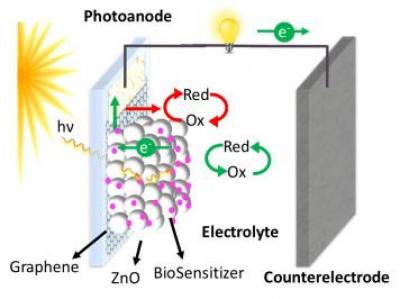Researchers at UC Riverside are attempting to integrate biological components with photovoltaic cells to deliver fully sustainable solar energy. The team's biophotovoltaic device is built from renewable carbon by integrating graphene hybrids and the phototropic protein bacteriorhodopsin.

Existing photovoltaic technology is not fully capable of realizing the promise of sustainable solar energy. Commercial and emerging photovoltaic technologies require energy-intensive extracting and manufacturing processes and often require metals like tin that generate social conflict and environmental harm.
Bacteriorhodopsin offers a potentially more environmentally friendly and effective alternative to silicon because it naturally converts solar radiation into electricity and can be produced with very little environmental impact.
The researchers integrate carbon nanomaterials like graphene to replace traditional transparent conductors. They now aim to improve the design of the device to increase power conversion efficiency by exploring the charge transfer mechanisms at the interfaces of the device.

